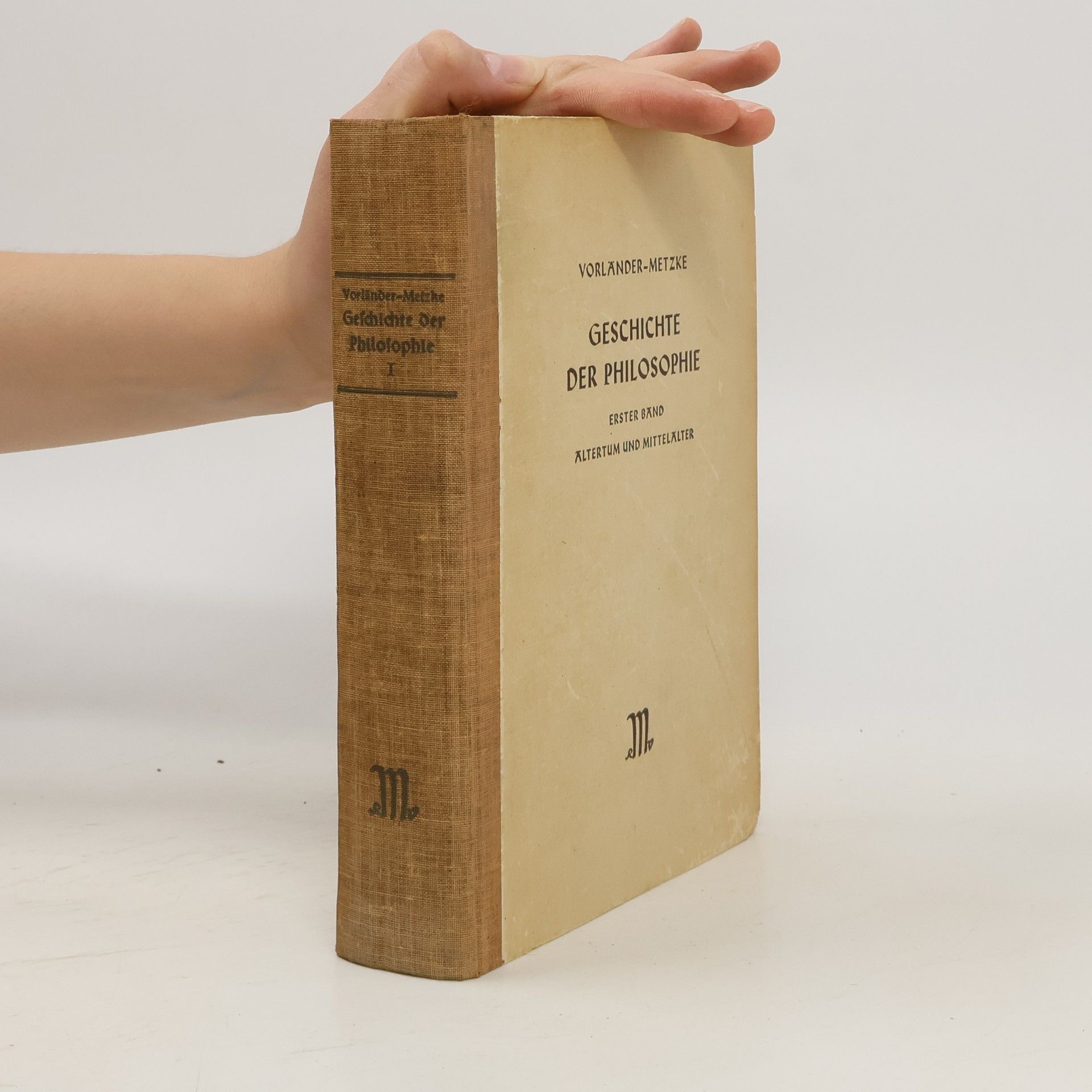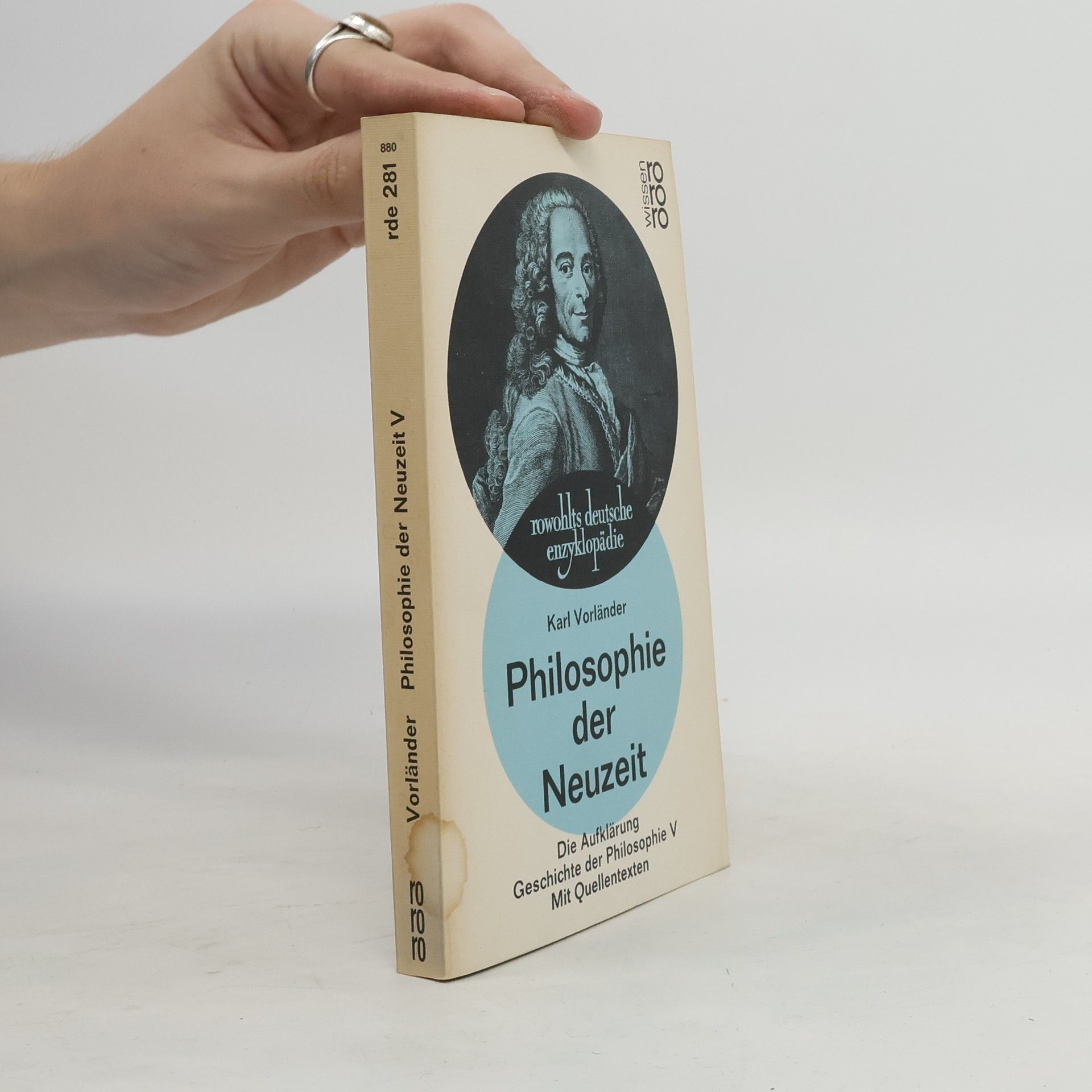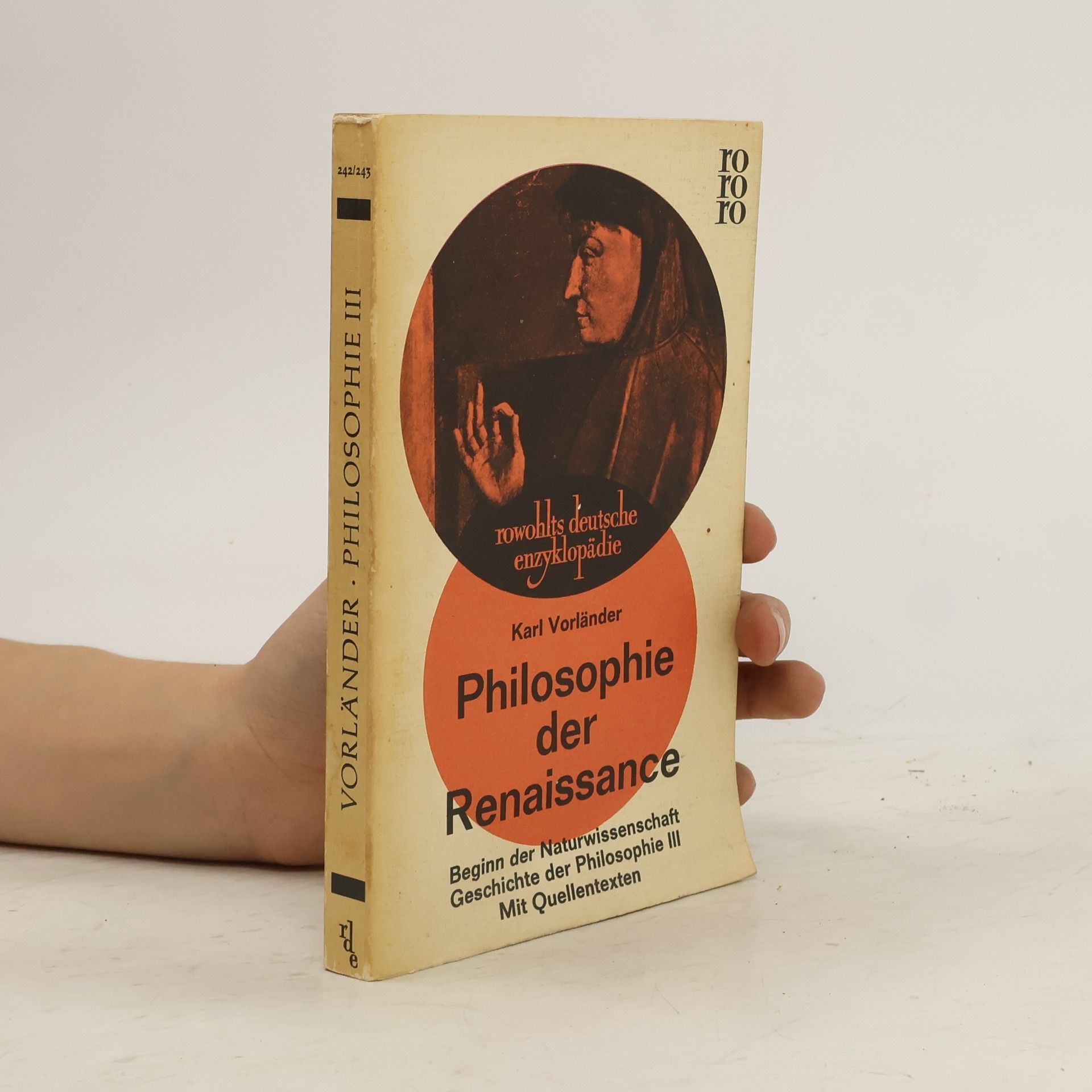Gymnasialprofessor und Philosoph Karl Vorländer ist besonders durch seine zweibändige „Geschichte der Philosophie“ (1903) bekannt geworden. Achtzehn Jahre später beschloss er „eine kürzere Darstellung desselben Stoffes für den freidenkenden Mann aus dem Volke zu schreiben, der für die großen Weltanschauungsfragen interessiert ist.“ Aus diesem Vorhaben ist ein Buch entstanden, das kurz und klar Hauptprobleme der Philosophie herausarbeitet und ihre Hauptgestalten lebendig schildert. Das Buch ist allgemein verständlich, ohne an der Oberfläche zu bleiben.
Karl Vorländer Bücher






Philosophie der Neuzeit
Die Aufklärung. Geschichte der Philospohie V
This work has been selected by scholars as being culturally important, and is part of the knowledge base of civilization as we know it. This work was reproduced from the original artifact, and remains as true to the original work as possible. Therefore, you will see the original copyright references, library stamps (as most of these works have been housed in our most important libraries around the world), and other notations in the work. This work is in the public domain in the United States of America, and possibly other nations. Within the United States, you may freely copy and distribute this work, as no entity (individual or corporate) has a copyright on the body of the work. As a reproduction of a historical artifact, this work may contain missing or blurred pages, poor pictures, errant marks, etc. Scholars believe, and we concur, that this work is important enough to be preserved, reproduced, and made generally available to the public. We appreciate your support of the preservation process, and thank you for being an important part of keeping this knowledge alive and relevant.
Geschichte Der Philosophie: II. Band
- 538 Seiten
- 19 Lesestunden
This work has been selected by scholars as being culturally important, and is part of the knowledge base of civilization as we know it. This work was reproduced from the original artifact, and remains as true to the original work as possible. Therefore, you will see the original copyright references, library stamps (as most of these works have been housed in our most important libraries around the world), and other notations in the work. This work is in the public domain in the United States of America, and possibly other nations. Within the United States, you may freely copy and distribute this work, as no entity (individual or corporate) has a copyright on the body of the work. As a reproduction of a historical artifact, this work may contain missing or blurred pages, poor pictures, errant marks, etc. Scholars believe, and we concur, that this work is important enough to be preserved, reproduced, and made generally available to the public. We appreciate your support of the preservation process, and thank you for being an important part of keeping this knowledge alive and relevant.
Die Wiederveröffentlichung bietet eine authentische Nachbildung des Originals, wodurch Leser die Möglichkeit erhalten, in die ursprüngliche Textfassung einzutauchen. Diese Ausgabe bewahrt den historischen Kontext und die kulturellen Nuancen des Werkes, was es zu einem wertvollen Stück für Sammler und Literaturinteressierte macht. Besondere Merkmale wie Illustrationen oder Anmerkungen aus der ersten Auflage werden hervorgehoben, um das Leseerlebnis zu bereichern. Ideal für alle, die die Wurzeln der Literatur schätzen und verstehen möchten.
Immanuel Kant (1724-1804) war ein einflussreicher deutscher Philosoph der Aufklärung. Sein Werk "Kritik der reinen Vernunft" markiert den Beginn der modernen Philosophie und beeinflusst bis heute die Erkenntnistheorie, Ethik und Ästhetik. Kant untersucht die Bedingungen der Erkenntnis und die Möglichkeit einer Metaphysik als Wissenschaft.


